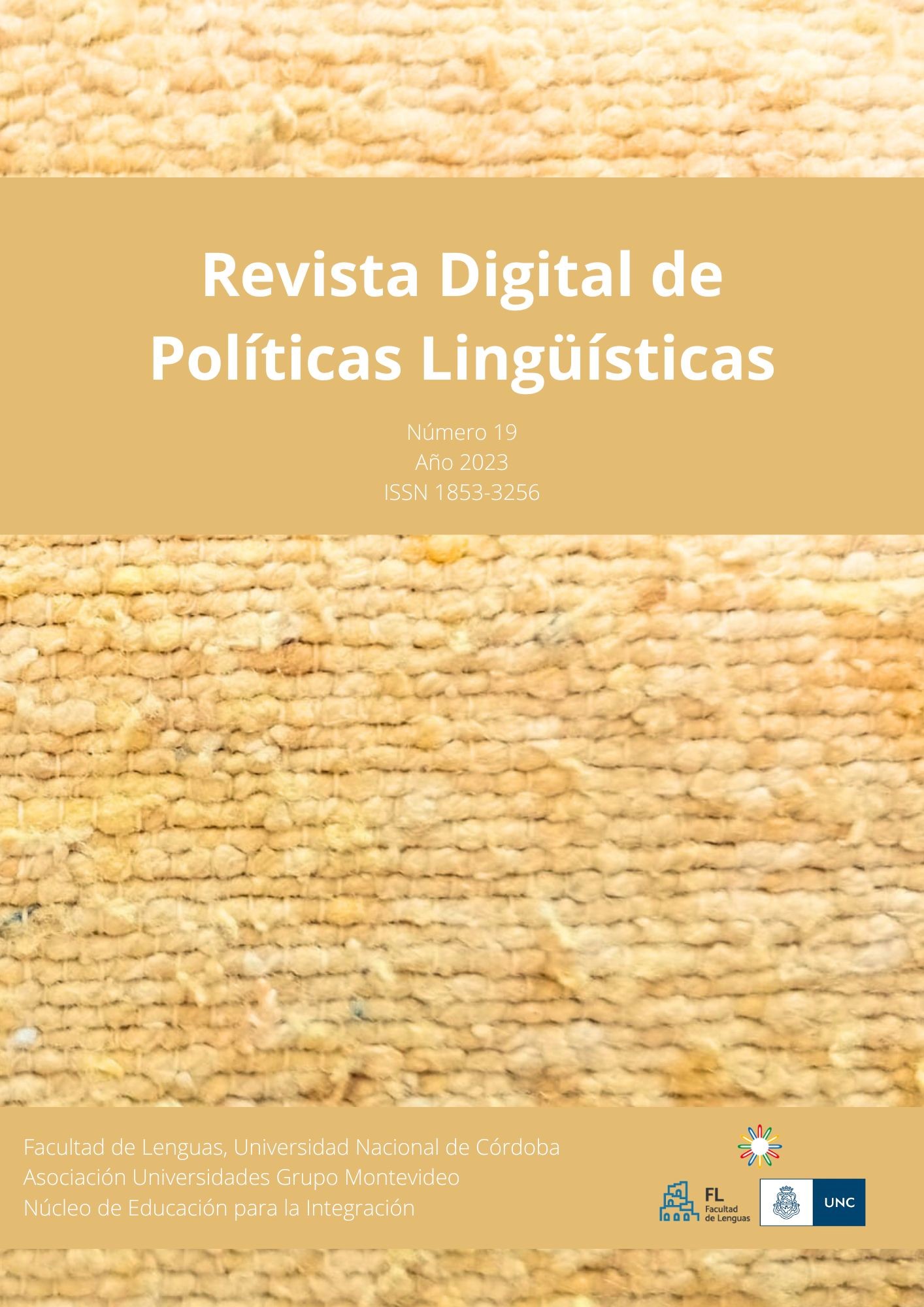THE FEMINIST DISCOURSE IN THE SEMIOTIC LANDSCAPE OF SANTA FE. CASE STUDIES: THE “MEMORIAL TO THE VICTIMS OF GENDER VIOLENCE” AND THE “FEMINIST URBAN MEMORIES”
Keywords:
feminist discourse, semiotic landscape of Santa Fe, social change, power relationsAbstract
The purpose of this study is to analyze two cases of the feminist discourses in the semiotic landscape (Jaworski and Thurlow, 2010) of the city of Santa Fe: “Memorial to the victims of gender violence” and “Urban feminist memories”. They seek to make the problem of gender violence visible and to raise awareness among citizens. We start from the concept of linguistic landscape (Landry and Bourhis, 1997) and enrich it with that of semiotic landscape to detect social change and interpret the construction of social relations and their dynamics based on visible linguistic practices in public space (Blommaert and Maly, 2014; Moustaoui Srhir, 2019).
Downloads
References
Ben-Rafael, E., Shohamy, E., Amara, M., & Trumper-Hecht, N. (2006). Linguistic Landscape as Symbolic Construction of the Public Space: The Case of Israel. In D. Gorter (Ed.), Linguistic Landscape: A New Approach to Multilingualism (pp. 7-30). Multilingual Matters.
Blommaert, J. & Maly, I. (2014). Ethnographic linguistic landscape analysis and social change: A case study. Working Papers in Urban Language & Literacies, 133, 1-20.
Bonnin, J. y Unamuno, V. (2019). Paisajes lingüísticos latinoamericanos: razones a favor, en contra y un montón de artículos. Signo y Seña, 35, 1-6.
Calvi, M. V. (2018). Paisajes lingüísticos hispánicos: panorama de estudios y nuevas perspectivas. LynX Panorámica de Estudios Lingüísticos, 17, 5-58.
Foucault, M. (2002). La arqueología del saber. Siglo XXI Editores.
Franco-Rodríguez, J. M. (2009). Interpreting the linguistic traits of linguistic landscapes as ethnolinguistic vitality: Methodological approach. Revista Electrónica de Lingüística Aplicada, 8, 1-15.
Gorter, D. (Ed.) (2006). Linguistic Landscape. A New Approach to Multilingualism. Multilingual Matters.
Hipperdinger, Y. (2022). De palimpsestos y otros usufructos en el paisaje lingüístico: intervenciones sobre mensajes previos. Círculo de Lingüística aplicada a la Comunicación, 91, 113-125.
Jaworski, A. & Thurlow, C. (2010) Introducing Semiotic Landscapes. In A. Jaworski y C. Thurlow (Eds.), Semiotic Landscapes: Language, Image, Space (págs. 1-40). Continuum.
Landry, R. & Bourhis, R. (1997). Linguistic landscape and ethnolinguistic vitality: An empirical study. Journal of Language and Social Psychology, 16(1), 23-49.
Li, Y. (2021). An expanded classification system of linguistic landscape and the analysis of dual discourse signage. International Journal of Linguistics, Literature and Translation, 4(1), 171- 186.
Martín Rojo, L. (2012). Paisajes lingüísticos de indignación. Prácticas comunicativas para tomar las plazas. Anuari del conflicte social, 2, 275-302.
Moustaoui Srhir, A. (2019). Dos décadas de estudios del Paisaje Lingüístico: enfoques teórico-metodológicos y nuevos desafíos en la investigación. Signo y Seña, 35, 7-26.
Ramallo, F. y Rodríguez Barcia, S. (2015). Graffiti y conflicto lingüístico: el paisaje urbano como espacio ideológico. Revista Internacional de Lingüística Iberoamericana, XIII(25), 131-153.
Scollon, R. & Scollon, S. (2003). Discourses in Place: Language in the Material World. Routledge.
Downloads
Published
Issue
Section
License

This work is licensed under a Creative Commons Attribution-NonCommercial-NoDerivatives 4.0 International License.
Aquellos/as autores/as que tengan publicaciones con esta revista, aceptan los términos siguientes:
- Los/as autores/as conservarán sus derechos de autor y garantizarán a la revista el derecho de primera publicación de su obra, el cual estará simultáneamente sujeto a la Licencia de reconocimiento de Creative Commons que permite a terceros compartir la obra siempre que se indique su autor y su primera publicación esta revista.
- La cesión de derechos no exclusivos implica que la publicación de los artículos en la presente revista no quita la posibilidad o el derecho al autor de publicar de manera posterior a otras revistas u órganos editoriales y la autorización por parte de los autores para que el trabajo sea depositado en los repositorio institucionales: Portal de Revistas de la Universidad Nacional de Córdoba.



